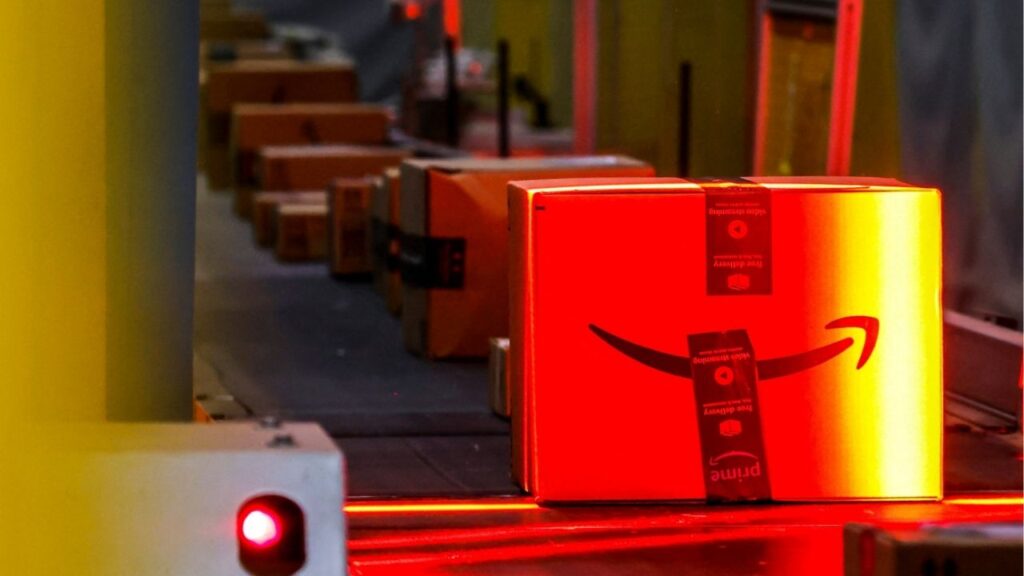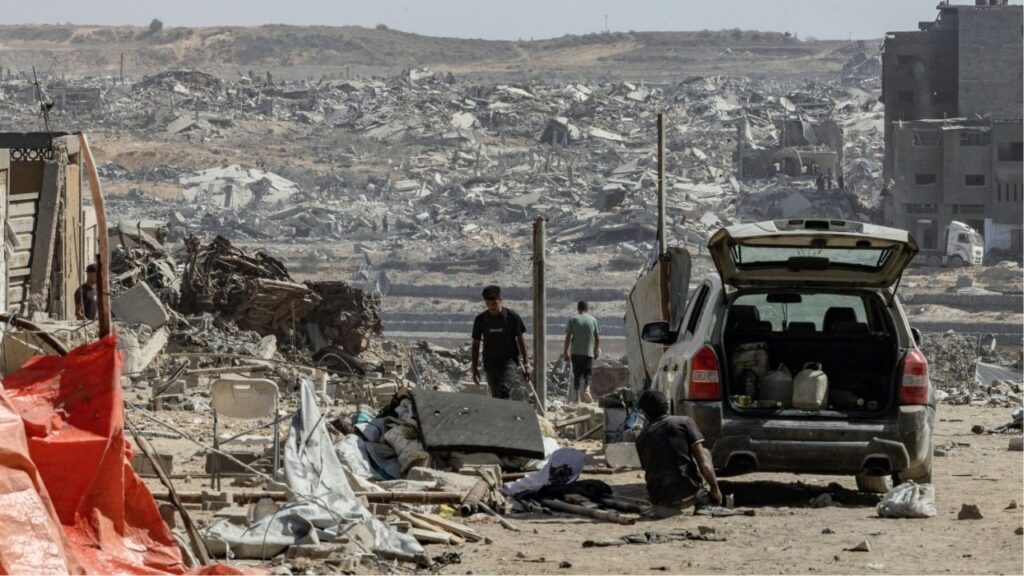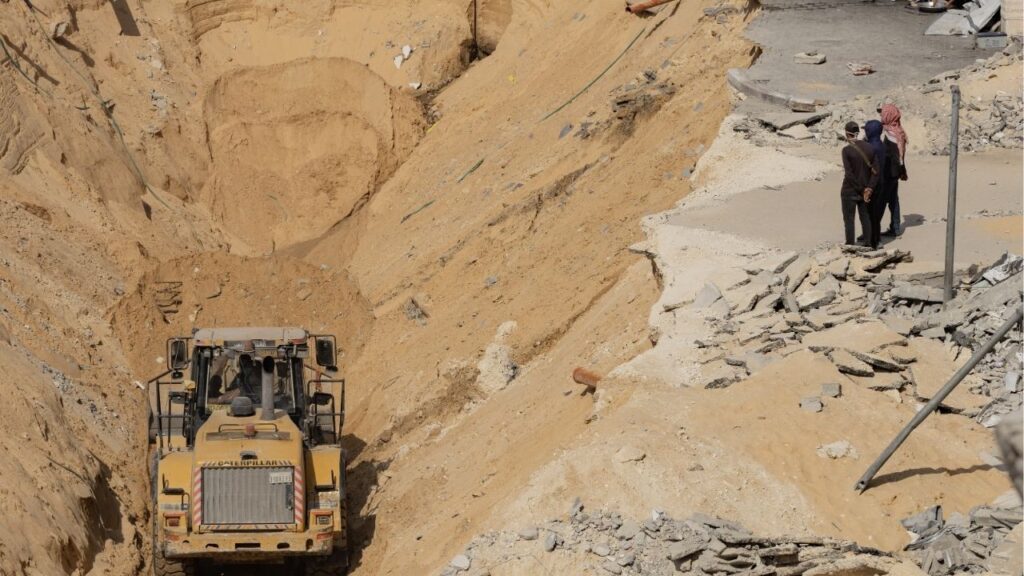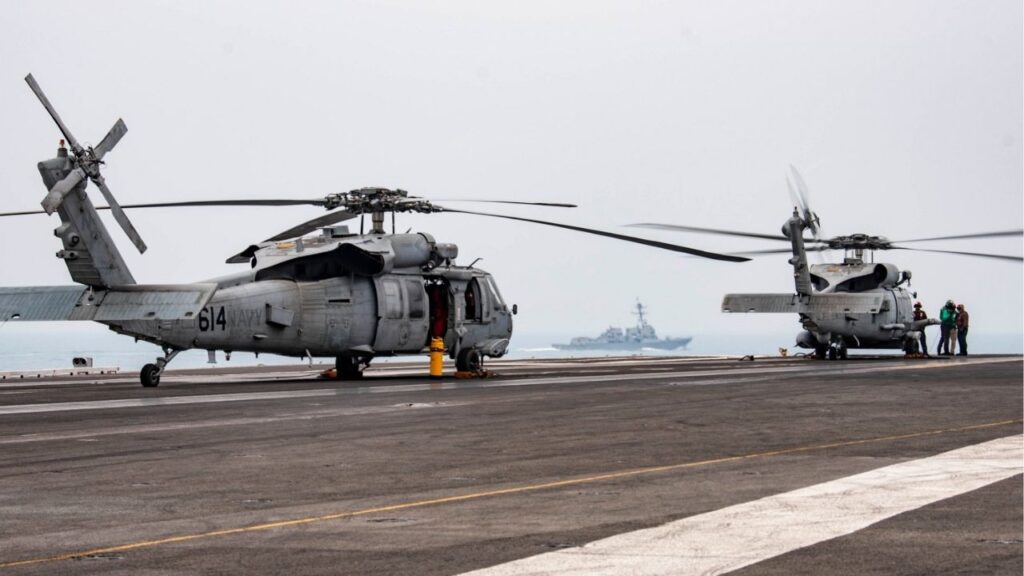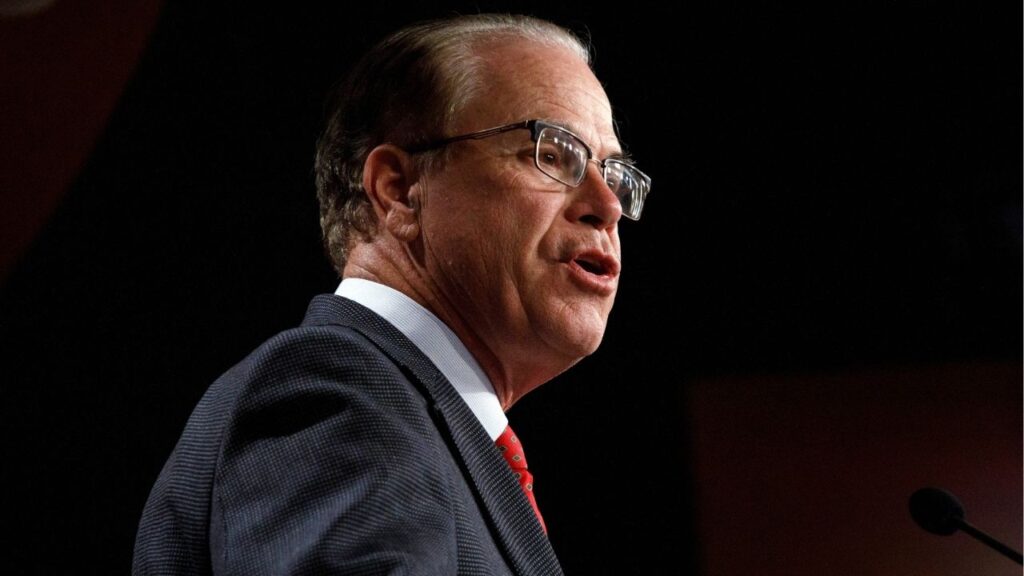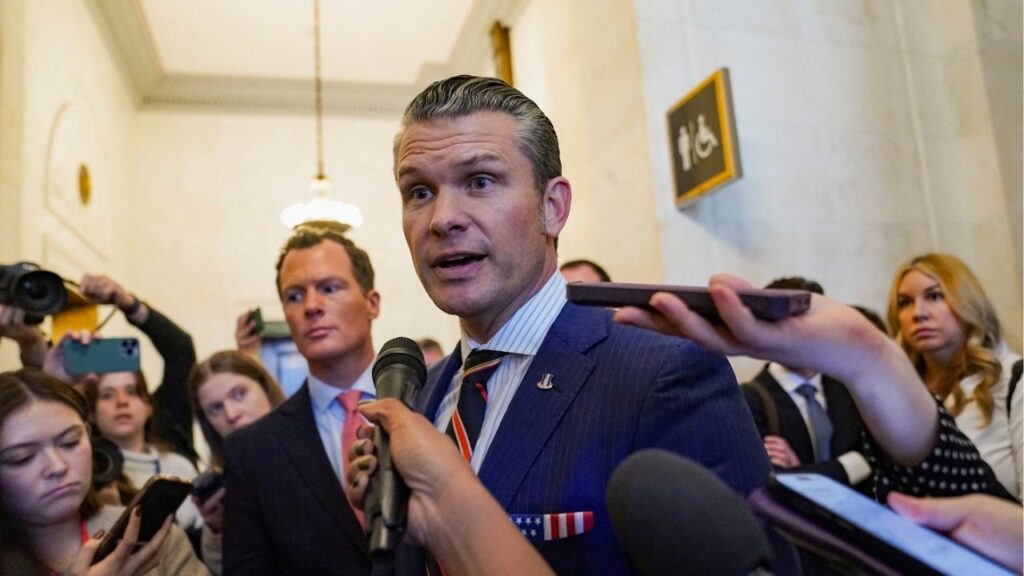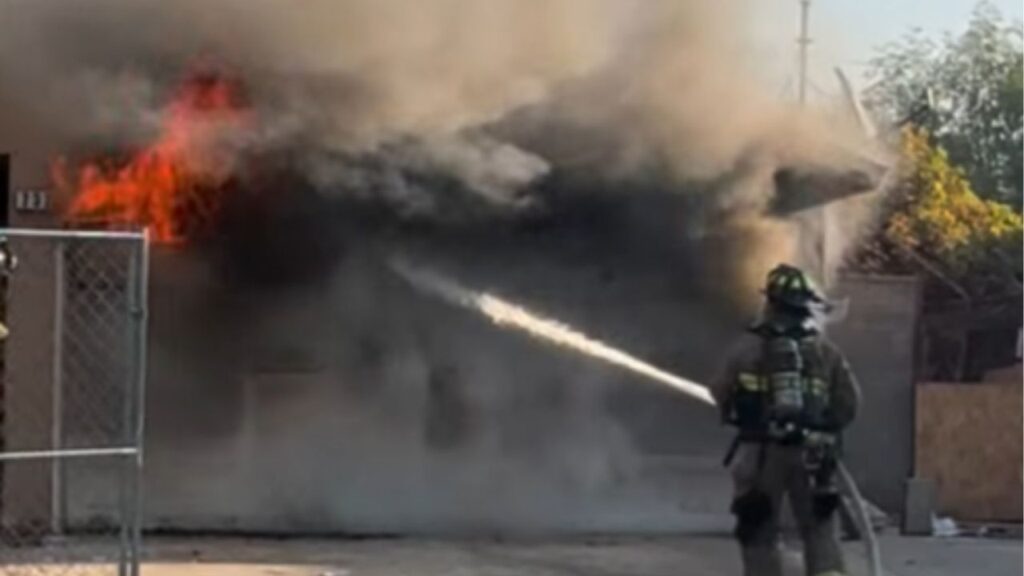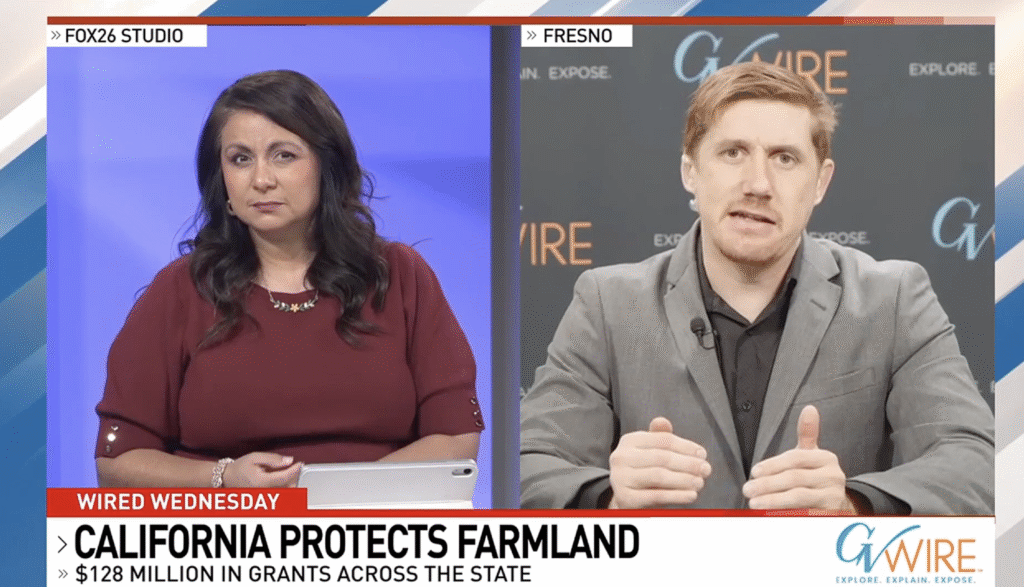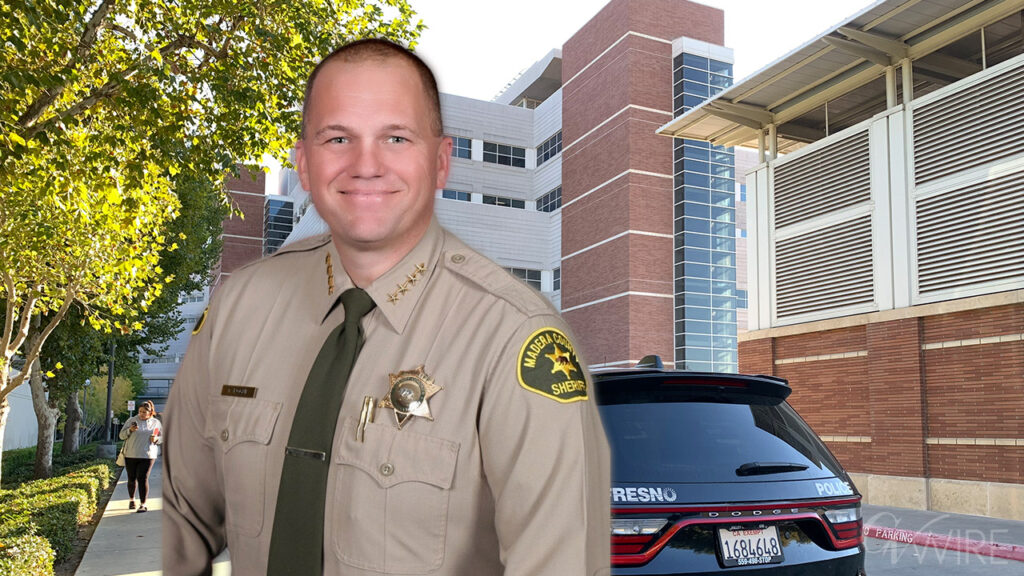Trump targets California water policy amid LA fire damage tour, reigniting debate on state's water management. (AP File)

- Trump criticizes California's water management as he prepares to tour wildfire damage in Los Angeles.
- The president calls for more water to be routed to Central Valley farms and Southern California cities.
- Experts say Trump's comments on LA fire hydrants running dry are not related to state water policies.
Share
As President Donald Trump prepares to tour wildfire damage in California, he’s zeroing in on one of his frequent targets for criticism: State water policy.
Since the fires broke out Jan. 7, Trump has used social media and interviews to accuse the state of sending too much water to the Pacific Ocean instead of south toward Los Angeles and highlighted how some hydrants ran dry in the early hours of the firefight in Pacific Palisades.
In the first hours of his second term, Trump called on federal officials to draft plans to route more water to the crop-rich Central Valley and densely populated cities in the southern part of the state. Two days later he threatened to withhold federal disaster aid unless California leaders change the state’s approach on water.
The New Republic reported that Trump said, “I want to see two things in Los Angeles. Voter ID, so that the people have a chance to vote, and I want to see the water be released and come down into Los Angeles and throughout the state,” Trump responded, ignoring the actual question while adding even more conditions to federal aid. “Those are the two things. After that, I will be the greatest president that California has ever seen.”
Here’s a look at the facts behind Trump’s comments and what power the president has to influence California water:
Southern California’s Water Sources
In general, most of the state’s water is in the north, while most of its people are in the drier south.
Los Angeles, the nation’s second largest city, depends on drawing water from elsewhere. Meanwhile the relatively dry Central Valley is home to fertile land where much of the nation’s fruits and vegetables are grown.
Two complex systems of dams and canals channel rain and snowmelt from the mountains in the north and route it south. One is managed by the federal government and known as the Central Valley Project, while the other is operated by the state of California and known as the State Water Project.
Both transport water through the Sacramento-San Joaquin River Delta, an estuary that provides critical habitat to fish and wildlife including salmon and the delta smelt, one of Trump’s fascinations.
Southern California gets about half its water from local supplies such as groundwater, according to the Metropolitan Water District of Southern California, a regional water wholesaler. Metropolitan provides the rest of the water from state supplies and the federally managed Colorado River system.
The Los Angeles Department of Water and Power also manages its own aqueducts that draw water from the eastern Sierra Nevada.
Related Story: Trump’s Cabinet Picks Are Set for Senate Hearings. Here’s the ...
Federal Power Over California Water
Federal officials guide how much is routed to the delta to protect threatened species and how much goes to Central Valley Project users, mostly farms. That project does not supply water to Los Angeles.
State officials are expected to follow the same environmental guidelines, said Caitlin Peterson, a research fellow at the Public Policy Institute of California’s Water Policy Center.
Federal and state officials typically coordinate how they operate those systems.
The delta connects inland waterways to the Pacific, and keeping a certain amount of water flowing through helps support fish populations and the waterway itself.
But Trump and others say the state lets too much water go to the ocean rather than cities and farms.
Trump’s Past Actions on California Water
His prior administration allowed more water to be directed to the Central Valley and out of the delta. Environmental groups opposed that, saying it would harm endangered species.
Gov. Gavin Newsom filed a lawsuit saying the rules would drive endangered fish populations to extinction. There were concerns about the tiny delta smelt, which is seen as an indicator of the waterway’s health, as well as and chinook salmon and steelhead trout, which return annually from the Pacific to spawn in freshwater rivers.
Then-President Joe Biden’s administration issued its own rules in December that environmental groups said provided modest improvements over those of the first Trump administration.
Related Story: Ontario Leader Will Call Election to Fight Trump’s Threatened Tariffs
Trump’s Current Stance on California Water
He has continued to question how California’s water managed. Last year on his Truth Social platform, he criticized the “rerouting of MILLIONS OF GALLONS OF WATER A DAY FROM THE NORTH OUT INTO THE PACIFIC OCEAN, rather than using it, free of charge, for the towns, cities, & farms dotted all throughout California.”
Such comments buoyed the spirits of many farmers and water managers in the Central Valley who say federal water allocations have been too limited in the past two years since ample rain boosted reservoir levels. A series of major storms in 2023 helped California emerge from a multi-year drought, but dry conditions have started to return in the central and southern parts of the state.
Trump has now directed the federal government again to route more water in the system it controls to farmers and cities.
Related Story: What Americans Think About Trump and Musk’s Plans for the Federal ...
Connection to Los Angeles Fires
Not much. The farms-versus-fish debate is one of the most well-worn in California water politics and doesn’t always fall along party lines. Some environmentalists think Newsom is too friendly to farming interests. But that debate is not connected to fire-related water troubles in Los Angeles.
Trump has suggested that state officials “turn the valve” to send more water to the city. But state water supplies are not to blame for hydrants running dry and a key reservoir near Pacific Palisades that was not filled.
The problem with the hydrants was that they were overstressed, and the Santa Ynez Reservoir was empty because it was undergoing maintenance.
Newsom has called for an investigation into how the Los Angeles Department of Water and Power managed both issues.
The Metropolitan Water District of Southern California has enough water in storage to meet roughly three years of water demand, said Deven Upadhyay, the agency’s interim general manager.
“We can deliver what our agencies need,” he said.
If the Trump administration chooses to route more water to system users, that won’t necessarily benefit Los Angeles, Upadhyay said.
Unless there is coordination between the federal and state systems, greater draws from the delta on the federal side could lead California officials to cut allocations to cities and farms to protect waterway, he added.









